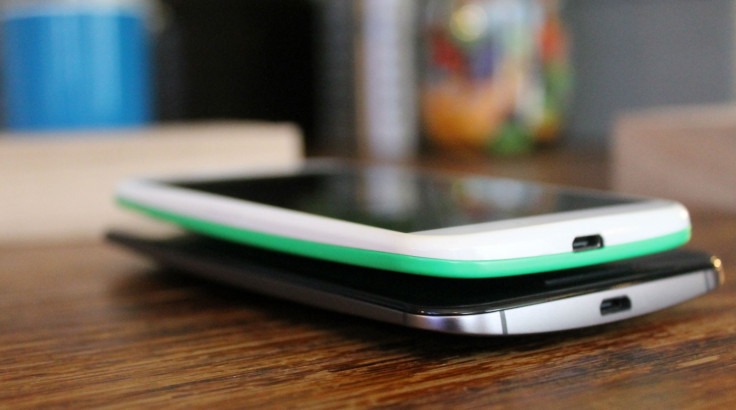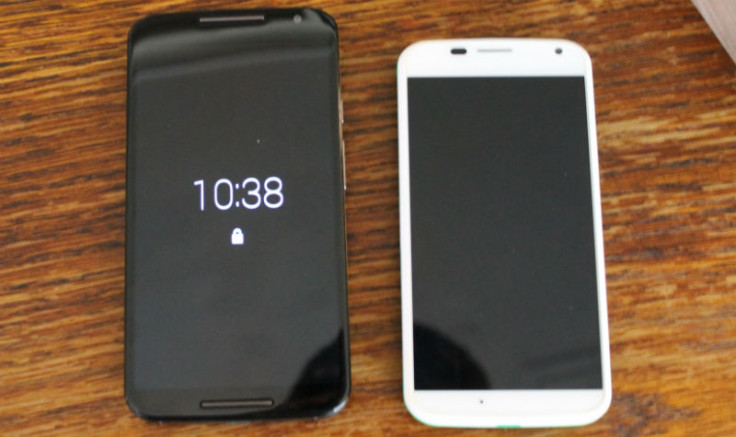New Moto X (2014) vs Original Moto X (2013): Should You Upgrade?

Motorola has updated its flagship device a year after launching the original Moto X in the US, but here in the UK, it is just over six months since the phone launched, meaning many will be wondering if they should upgrade.
The new Moto X is a significant upgrade and here we look at what Motorola has added and changed in the phone it hopes will challenge devices from Apple, Samsung, Sony and LG.
Moto X (2014) vs Moto X (2013): Design
The design of the original Moto X was rather uninspiring but I'm glad to report that Motorola has clearly listened to feedback and has taken positive steps to address this.
The original Moto X introduced the curved rear cover which helped make the device easier to hold and that design language is continued in the new model.

The 2014 version of the Moto X also features an aluminium chassis compared to the plastic used int he construction of the original. That means the phone is slightly heavier (144g vs 139g) and thanks to the bigger screen is also wider and taller.
The new phone is also slightly thinner now tapering to 3.8mm, significantly down from 5.7mm in the original.
Of course one of the biggest updates is the ability to use Moto Maker, the company's system allowing users to customise the looks and feel of their new Moto X smartphone. It will allow customers change the colour of the front and rear covers as well as the trim of the phone - and even go so far as engraving you own personal messages on the phone.
Moto X (2014) vs Moto X (2013): Screen
The screen on the original Moto X was 4.7in with a resolution of 1280 x 720 pixels, giving it a pixel density of 312 pixels per inch (ppi) and while it was a decent screen, it could not compete with the best on the market.

In the new Moto X, Motorola has increased the size of the screen to 5.2in while boosting the resolution to Full HD (1920 x 1080) giving the new Moto X a pixel density of 423ppi, which is on a par with the likes of the Galaxy S5 and HTC One M8.
Moto X (2014) vs Moto X (2013): Hardware
The original Moto X used a dated Qualcomm Snapdragon S4 Pro chip with 2GB of RAM and felt underpowered compared to the other flagship models. There was 16GB or 32GB versions available but no microSD card slot.
The new Moto X is using powerful Qualcomm's Snapdragon 801 chipset (same as the Xperia Z2 or Galaxy S5) with a quad-core processor running at 2.5GHz and paired with 2GB RAM. This should mean the new Moto X is able to handle the high resolution screen, 3D intensive games or HD video streaming.
There are still 16GB and 32GB versions available, but while it has added a microSD card to the new Moto G, it has not added one to the Moto X.
Elsewhere, Motorola claims you should be able to charge your new Moto X in just 15 minutes giving you eight hours of use using the newly added turbo-charging support.
Moto X (2014) vs Moto X (2013): Voice Control and Gestures
One of the big selling points of the original Moto X was voice controls, introducing an always-listening feature meaning you could interact with your phone by saying "OK Google".
The 2013 version of the Moto X also introduced Active Display which allowed you see notifications without having to fully power on the screen.

With the new Moto X, Motorola has built on the voice control integration, now allowing you customise the voice trigger to anything you want. There is also more integration with third party apps, such as Facebook and WhatsApp, allowing you post updated using just your voice.
New for the 2014 version of the Moto X is gesture control. Using the built-in infrared sensor, you can now silence your alarm or reject a call by simply swiping your hand over the screen.
Moto X (2014) vs Moto X (2013): Software
The original Moto X shipped with a pure version of Android 4.3 and has since been upgraded to Android 4.4. There is no word so far on whether it will be updated to the up-coming Android L.
Motorola will ship the new Moto X with a pure version of Android 4.4.4 - the very latest version of Google's software - but crucially, Motorola has explicitly said the 2014 version of Moto X will get the Android L update when it is launched.
Moto X (2014) vs Moto X (2013): Camera
The original Moto X had a 10 megapixel camera on the rear and a 2 megapixel camera on the front. The results were decent if not groundbreaking but the unique quick capture method of turning on the camera by flicking your wrist was a great feature.
Quick capture remains in place and Motorola has updated the rear camra sensor to 13 megapixels along with a dual flash, and 4K video recording (up from 1080p).
Moto X (2014) vs Moto X (2013): Price
The 16GB version of the original Moto X cost £380 (which has since dropped to around £250).
The new Moto X will cost £419 for the £16GB version.
Moto X (2014) vs Moto X (2013): Should you upgrade?
The 2014 version of the Moto X is a significant upgrade on the original. Building on the successful integration of unique features like voice control, the new version feels more premium and adds a higher resolution screen.
That said, it is also significantly more expensive, and if you've bought your Moto X in the UK in the last six months, it may seem like too much, too soon.
© Copyright IBTimes 2024. All rights reserved.







